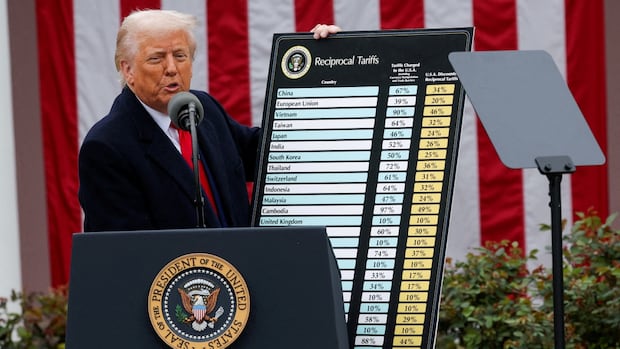Trump's Trade War: Unmasking the Winners and Losers
Editor's Note: A comprehensive analysis of the winners and losers from the Trump administration's trade war is presented today.
Introduction: Donald Trump's presidency saw a significant escalation of trade tensions, particularly with China. His administration implemented tariffs on billions of dollars worth of goods, aiming to reshape global trade and protect American industries. But did it work as intended? This article delves into the complex ramifications of the Trump trade war, revealing the surprising winners and the hard-hit losers. We'll analyze the economic data and expert opinions to paint a clear picture of this controversial policy's lasting impact.
Why This Topic Matters: The Trump trade war wasn't just a headline; it had tangible consequences for businesses, consumers, and the global economy. Understanding its effects is crucial for navigating future trade policy debates and anticipating potential economic shifts. This analysis will explore the long-term effects of tariffs, the shifting global trade landscape, and the lessons learned from this turbulent period. We will examine the impact on specific sectors, including agriculture, manufacturing, and technology, offering a multifaceted perspective on the trade war's legacy.
Key Takeaways:
| Category | Winners | Losers |
|---|---|---|
| Agriculture | Certain niche agricultural exporters (e.g., some dairy products) | Soybeans, pork producers |
| Manufacturing | Some domestic steel and aluminum producers | Businesses reliant on imported goods, consumers |
| Technology | Certain domestic semiconductor manufacturers | Companies with significant supply chains in China |
| Consumers | (Limited) - Few direct winners | Majority, through increased prices on goods |
1. Trump's Trade War: A Deep Dive
Introduction: The Trump administration's trade war was characterized by escalating tariffs primarily aimed at China, but also impacting other countries. This section analyzes the core aspects of the trade conflict.
Key Aspects: The strategy focused on imposing tariffs on imported goods, ostensibly to protect American jobs and industries. Key targets included steel, aluminum, and a wide range of consumer goods from China. Retaliatory tariffs from other nations added further complexity.
Detailed Analysis: The initial impact saw a rise in prices for consumers as tariffs increased the cost of imported goods. While some domestic industries, like steel, saw a temporary boost in production, this often came at the expense of higher prices and reduced competitiveness in global markets. The overall impact on job creation is still debated, with studies offering conflicting conclusions. The trade war significantly disrupted global supply chains, leading to uncertainty and economic slowdown in various sectors.
2. Interactive Elements on Trump's Trade War
Introduction: Beyond the static economic data, the Trump trade war presented several interactive elements, including negotiations, retaliatory actions, and shifting alliances.
Facets: The trade war involved a series of tit-for-tat tariffs, leading to uncertainty in the market. Negotiations between the US and China were characterized by periods of escalation and tentative agreements. The impact on global alliances and trade relationships was substantial, leading to shifts in partnerships and supply chain strategies.
Summary: These interactive elements highlight the dynamic and unpredictable nature of the trade war, demonstrating how quickly geopolitical factors can influence economic outcomes. The fluidity of the situation made accurate forecasting difficult, leading to uncertainty for businesses and investors.
3. Advanced Insights on Trump's Trade War
Introduction: A deeper understanding requires analyzing the long-term consequences and unforeseen impacts of the trade war.
Further Analysis: Some argue the trade war inadvertently accelerated the decoupling of the US and Chinese economies, leading to a re-evaluation of global supply chains. The increased reliance on domestic production in certain sectors may have long-term implications for manufacturing capabilities and innovation. The impact on developing countries reliant on exports to the US was also significant, adding to existing global inequalities.
Closing: The long-term effects of the Trump trade war continue to unfold. Understanding its nuances is crucial for informing future trade policies and mitigating the risks of similar confrontations.
People Also Ask (NLP-Friendly Answers):
Q1: What is Trump's trade war? A: It refers to the period of heightened trade tensions during the Trump administration, characterized by the imposition of tariffs on imported goods, primarily from China.
Q2: Why is Trump's trade war important? A: It significantly impacted global trade, supply chains, and the economies of various nations, leading to increased prices, economic uncertainty, and a reshaping of international relationships.
Q3: How did Trump's trade war benefit me? A: Unless you were directly involved in a protected domestic industry, it is unlikely that you directly benefited. Most consumers experienced increased prices on goods.
Q4: What are the main challenges with Trump's trade war? A: Increased consumer prices, disruption of global supply chains, economic uncertainty, and potential damage to international relationships.
Q5: How to prepare for future trade conflicts? A: Businesses should diversify their supply chains, improve domestic production capabilities, and closely monitor global trade policy developments.
Practical Tips for Navigating Future Trade Uncertainties:
Introduction: Learning from the past is crucial for preparing for the future.
Tips:
- Diversify your supply chains.
- Invest in domestic production capabilities.
- Monitor global trade policy developments closely.
- Build strong relationships with international partners.
- Hedge against currency fluctuations.
- Develop flexible business models.
- Utilize trade data and analytics.
- Advocate for sound trade policies.
Summary: Proactive risk management and a keen understanding of global trade dynamics are vital for navigating future uncertainties.
Transition: The legacy of the Trump trade war serves as a cautionary tale and a valuable lesson in the complexities of international trade.
Summary: The Trump trade war had far-reaching consequences, impacting various sectors and nations. While some domestic industries experienced temporary gains, the overall effect was largely negative for consumers and the global economy. Understanding its intricacies is crucial for informing future trade policies and preparing for potential economic shocks.
Call to Action: Ready to dive deeper? Subscribe for more insights on global trade and economic policy.

